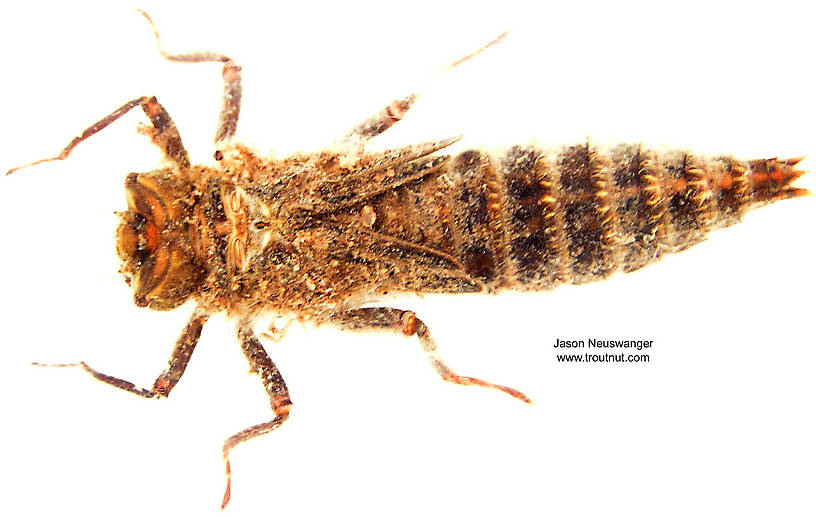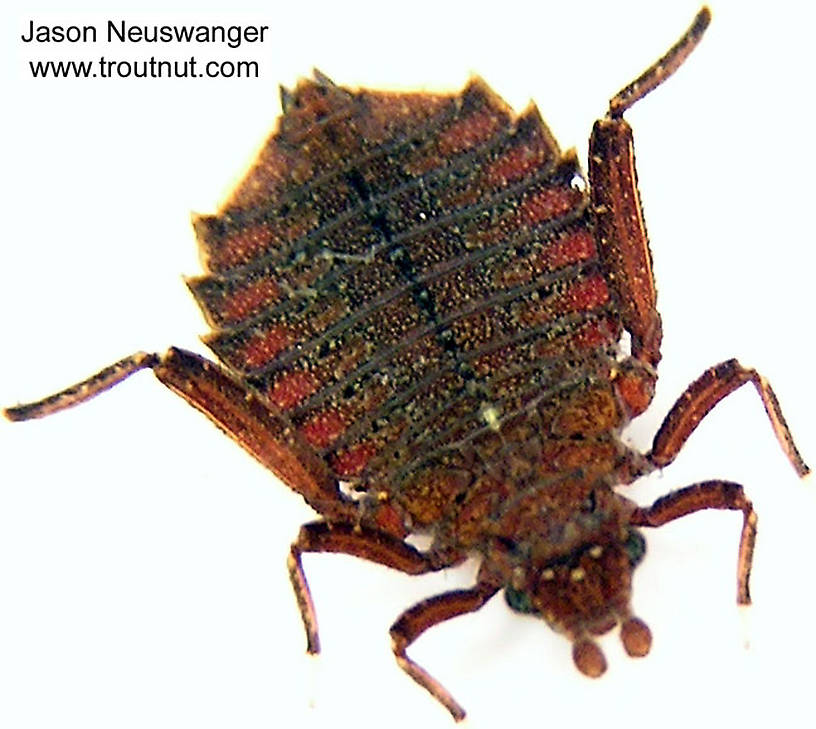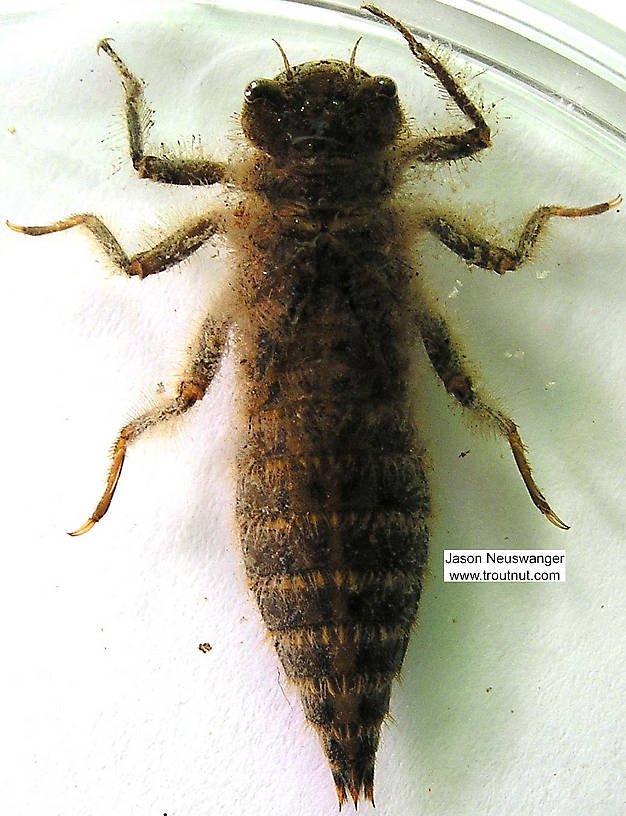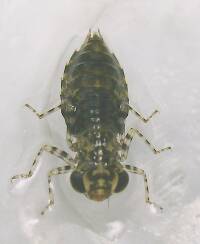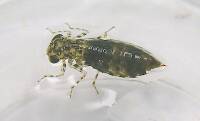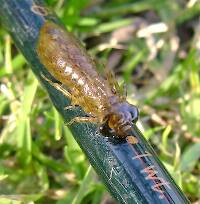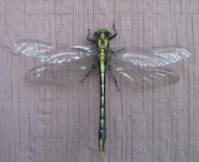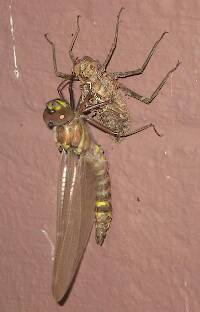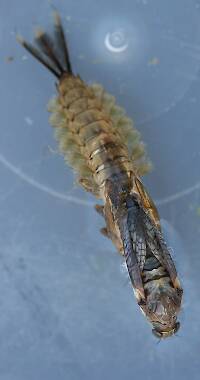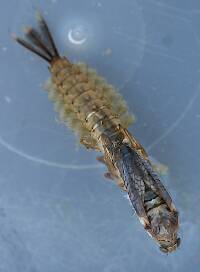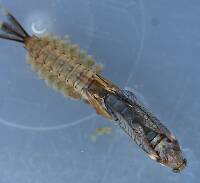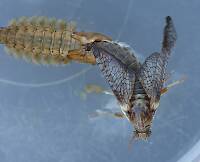
Blue-winged Olives
Baetis
Tiny Baetis mayflies are perhaps the most commonly encountered and imitated by anglers on all American trout streams due to their great abundance, widespread distribution, and trout-friendly emergence habits.
Featured on the forum

This specimen appears to be of the same species as this one collected in the same spot two months earlier. The identification of both is tentative. This one suffered some physical damage before being photographed, too, so the colors aren't totally natural. I was mostly photographing it to test out some new camera setting idea, which worked really well for a couple of closeups.

Troutnut is a project started in 2003 by salmonid ecologist Jason "Troutnut" Neuswanger to help anglers and
fly tyers unabashedly embrace the entomological side of the sport. Learn more about Troutnut or
support the project for an enhanced experience here.
This topic is about the Insect Order Odonata-Anisoptera
Dragonflies and damselflies are in the same order, Odonata, but they are taxonomically separated on an obscure level not built into this site, the suborder. Dragonflies are in the rarely mentioned suborder Epiprocta, and within that suborder is the infraorder Anisoptera, the scientific name by which they're best known. None of that will help you catch trout, but it explains what the hyphen in this page's name is all about.Example specimens
Troutnut on Dec 7, 2006December 7th, 2006, 6:23 am EST
Our great discussion of hellgrammites included a very interesting little tangent about the feeding habits of dragonflies which I'm copying into the dragonfly section.
Martinlf wrote:
Gonzo replied:
I love watching dragonflies feed on mayflies, but I admit I've never noticed the falling discards. I'll keep an eye out for them next season. A good photo sequence of the phenomenon would be awesome, but I think my photography skills would need to jump several orders of magnitude to capture such a thing in action.
Martinlf wrote:
This is pure trivia, and non-hellgrammite related, but Brett's comments on the discards of bats and nighthawks reminded me of an experience on the Delaware. I was fishing with a guide and we saw several mayfly wing and thorax combos floating along with missing abdomens. At first we hypothesized that a small trout must have bitten the abdomen right off. Then we saw a dragonfly intercept a sulphur mid flight, chew up the abdomen almost instantly, and let the wings and thorax fall, helicoptering like a winged maple seed. This is probably not news to the entomologists here, but some everyday anglers might not have yet noticed this phenomenon. Gonzo, do we have a wing and thorax tie yet?
Gonzo replied:
Louis,
I haven't found trout to be that interested in dragonfly discards, but you never know. I am reminded of an evening on Mud Run when my fishing partner's fly mysteriously ascended skyward, towing a good portion of the tip of his fly line. His fly, while having a minimal effect on the trout we were pursuing, was sufficiently convincing to a large dragonfly--a testament to the powerful flight and lifting capabilities of these insects!
I love watching dragonflies feed on mayflies, but I admit I've never noticed the falling discards. I'll keep an eye out for them next season. A good photo sequence of the phenomenon would be awesome, but I think my photography skills would need to jump several orders of magnitude to capture such a thing in action.
Jason Neuswanger, Ph.D.
Troutnut and salmonid ecologist
Troutnut and salmonid ecologist
Quick Reply
Related Discussions
Topic
Replies
Last Reply
2
Sep 5, 2012
by Sayfu
by Sayfu
10
Apr 26, 2012
by Dejackson
by Dejackson
17
Feb 11, 2014
by Crepuscular
by Crepuscular
Re: Identification of a possible Cordulegaster Dragonfly Nymph
In Cordulegaster Dragonfly Nymph by IanB
In Cordulegaster Dragonfly Nymph by IanB
6
Feb 10, 2017
by Taxon
by Taxon


